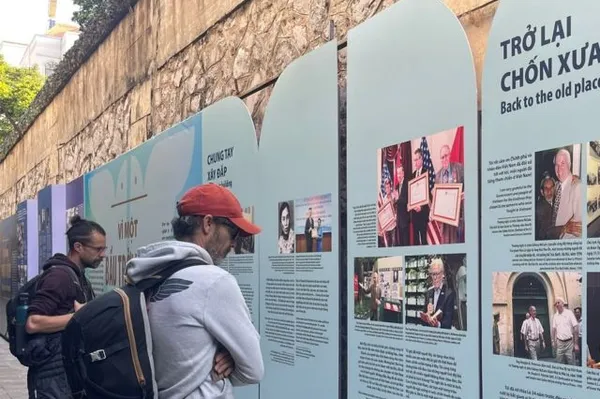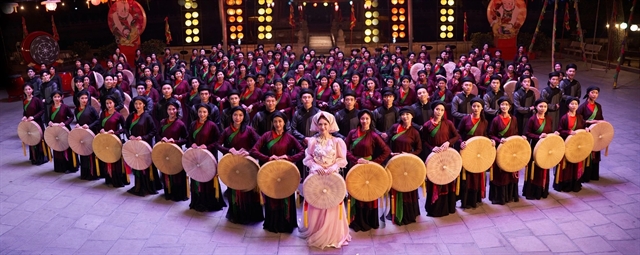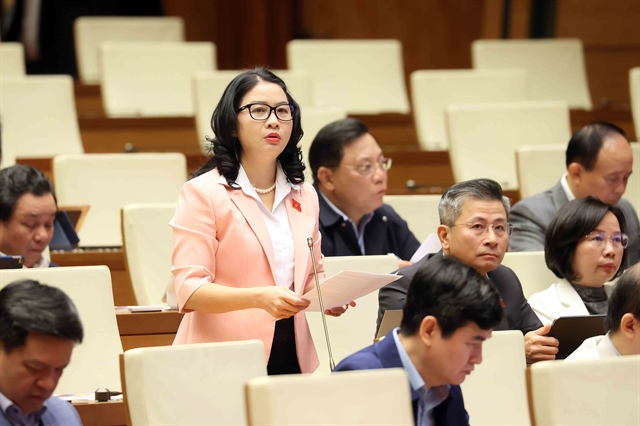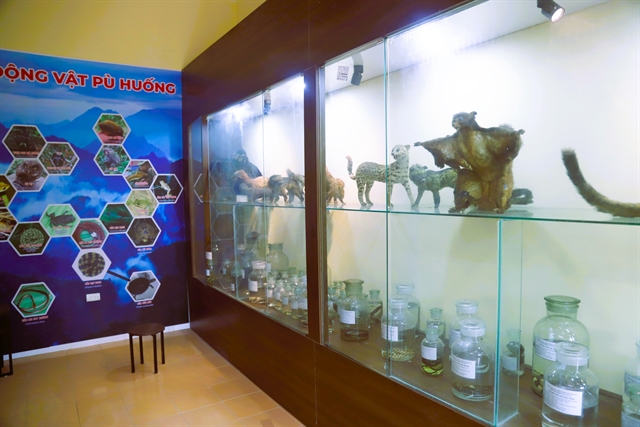 Life & Style
Life & Style

 |
'Bắc Bling' MV by Hoà Minzy has gained tremendous acclaim at home and abroad. VNA/VNS Photos |
Việt Nam is rewriting the playbook on cultural diplomacy, shifting from traditional government-led initiatives to embracing grassroots participation from the public, businesses and social media influencers. In an exclusive interview with the Vietnam News Agency, Deputy Minister of Culture, Sports and Tourism Tạ Quang Đông elaborates how those changes have been made possible thanks to the country's new Cultural Diplomacy Strategy to 2030.
 |
| Deputy Minister of Culture, Sports and Tourism Tạ Quang Đông. |
The Cultural Diplomacy Strategy to 2030 states that it will centre on localities, the masses and businesses, whereby these entities serve both as beneficiaries and partners in implementing the strategy. What specific measures have been taken to materialise these orientations?
Diplomacy has transcended traditional frameworks and geographical boundaries amidst globalisation, operating in both physical and digital spaces. Therefore, cultural diplomacy encompasses not just culture and arts in the narrow sense, but culture in its broadest national and international context, including political culture, economic culture, education and training, technical assistance, technology transfer and even humanitarian aid.
However, while expanding to include the masses and businesses, the Strategy to 2030 has not yet addressed the role of intellectuals and artists – the core creators of culture. This coordination gap needs improvement for the effective implementation of cultural diplomacy and external cultural affairs.
The emphasis on localities, the populace and businesses as the centre of cultural diplomacy in the Strategy to 2030 represents a significant change from the 2011 strategy, which was limited to the public sector's role. This new approach aligns with the concept of people's diplomacy and intersects with external cultural affairs.
The Việt Nam Communist Party and State’s efforts have yielded positive outcomes, helping improve Việt Nam's image in the international arena while consolidating the country’s external relations and socio-economic development in the future.
We're taking six key initiatives: strengthening cultural exchanges between localities through international festivals like the Hà Nội International Film Festival and Huế Festival; encouraging public participation in international cultural and education exchanges; supporting businesses at international trade fairs; developing digital cultural diplomacy platforms; collaborating with cultural organisations; and raising public awareness of the significance of cultural diplomacy through mass media and education programmes.
Many young people are actively promoting Vietnamese culture on social media. What is your view on this trend, and how should Việt Nam encourage more people to become cultural ambassadors?
The trend of young people, especially influencers, sharing Vietnamese cultural values, traditions and images of the country and its people on social media is highly encouraging.
Creative short videos, images and posts combining traditional culture with modern elements in cuisine, tourism, music and customs not only attract domestic viewers but create strong appeal for international communities.
Examples include Bắc Bling by Hoà Minzy, Tuấn Cry and Xuân Hinh, which has gained tremendous acclaim both in and outside the country.
To have more people as voluntary cultural ambassadors, Việt Nam needs to complete institutional frameworks with new laws supporting artistic creativity and copyright protection, create favourable environments for international cooperation, support online cultural activities through funding and training programmes, strengthen cultural education for young people and assist Vietnamese communities abroad in organising local cultural activities.
Some cultural and entertainment programmes have become influential not only in the country but also in the Vietnamese diaspora. What makes these shows so successful, especially in terms of connecting young Vietnamese living abroad with their homeland's culture?
Last year witnessed over 50 music events of various scales, with participation from both Vietnamese and international artists. Audience numbers reached record high up to 40,000 per event, clearly demonstrating Việt Nam's music industry potential.
The two most prominent events, Anh trai say Hi (Say Hi) in Hà Nội and Anh trai vượt ngàn chông gai (Call Me by Fire Vietnam) in Hưng Yên Province, each attracting nearly 100,000 attendees, left strong artistic and economic impacts. The former reached 18 billion listeners and viewers globally as of May 2025, with a significant influence on different online social platforms.
I think the success of these shows stems from the harmonious combination of entertainment and education, conveying meaningful messages about life, family, love and national cultural identity. Many novel performances combining traditional arts with modern elements, creative staging, costumes, lighting and interactive games have created strong connections between artists and audiences, providing unique and fresh artistic experiences.
The social media influence from YouTube, TikTok, Facebook and Threads is undeniable. With hundreds of millions of followers on social platforms, concert tickets were sold out immediately upon release.
These events’ success has boosted Việt Nam's image as a unique cultural tourism destination while also prompting the possibility to build national cultural brands through high-quality performances, to create more opportunities for young people and Vietnamese communities abroad to understand and experience Vietnamese traditions, customs, history and people, as well as to closely connect young overseas Vietnamese with their homeland's culture.
Việt Nam has launched several cultural promotion programmes through UNESCO and international media channels. How do you assess the effectiveness of these initiatives and what plans are in the pipeline to further this trend?
Việt Nam has boasted over 60 inclusions in the UNESCO heritage list. The country was the first to successfully request the transfer of Xoan singing of Phú Thọ from UNESCO’s Urgent Safeguarding List to the Representative List of the Intangible Cultural Heritage of Humanity, showing Việt Nam's pioneering role, responsibility and commitment to heritage preservation.
We have been consistent in improving the quality of information catered for foreigners and the Vietnamese diaspora. Annually, the culture ministry welcomes about 30 international film crews and international news agencies to Việt Nam for filming and reporting on our country and people, using funding from either international film companies or contributions from individuals and organisations.
Strengthening partnerships with world-class cultural institutions and investors will help us introduce Vietnamese cultural products to international stages like the Oscars, Cannes, and global expos in a near future. Supporting Vietnamese artists to study abroad or to participate in international competitions and festivals is also another top priority for us.
For the Vietnamese diaspora, especially younger generations, we aim to provide them with more opportunities for cultural engagement and creative expression.
Digital transformation remains central to our strategy. We have applied new technologies across museums, galleries and cinemas, while also launching interactive content electronically. These tools have not only helped us reach audiences worldwide but also made our culture more accessible.
Finally, Việt Nam will continue hosting large-scale international cultural events. Expanding the network of Vietnamese cultural centres abroad will further enhance our global presence and foster a deeper sense of cultural identity among Vietnamese diasporic communities. VNS




